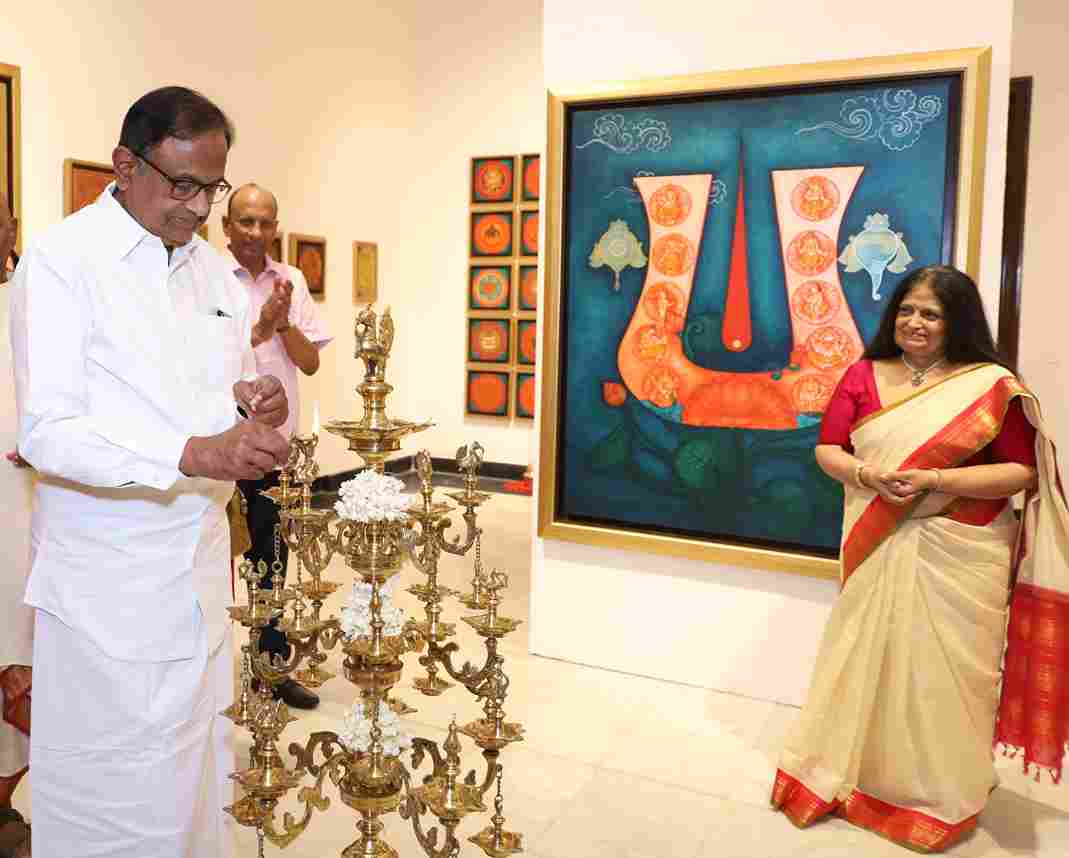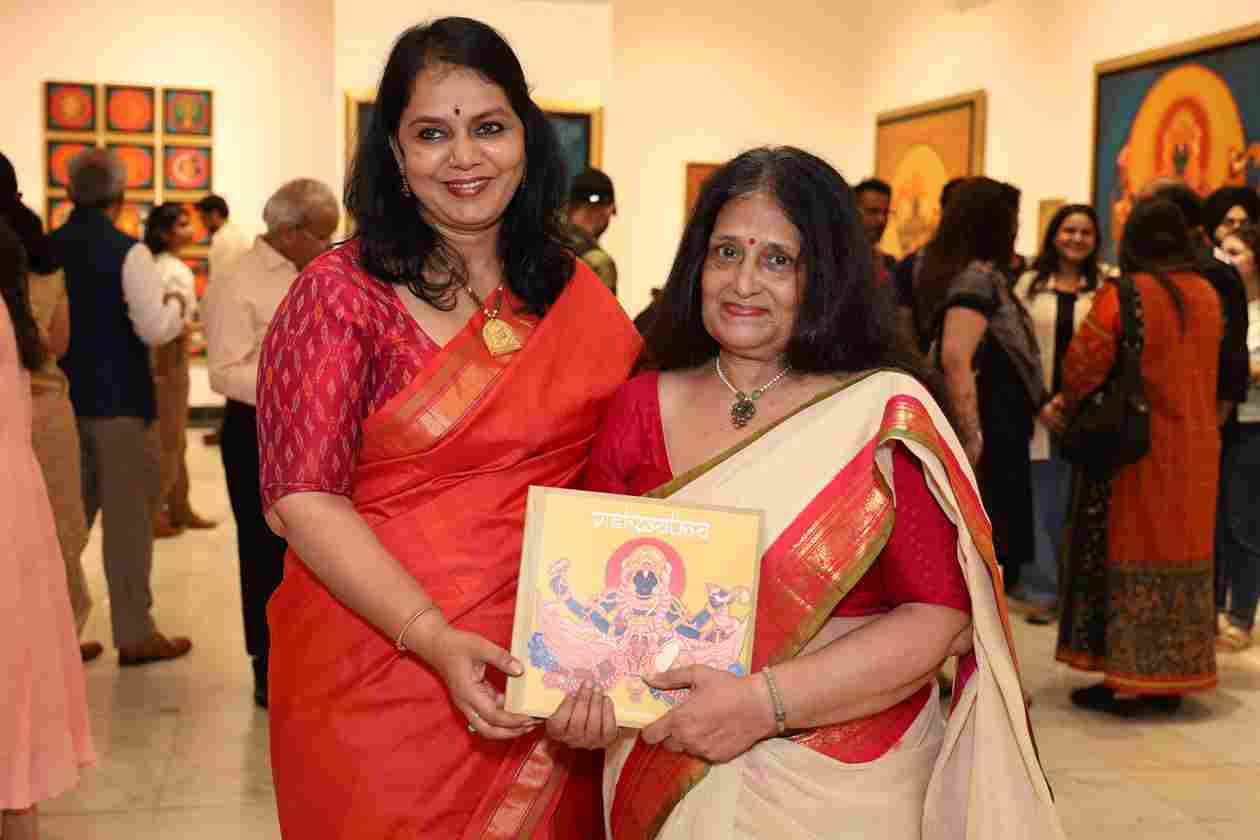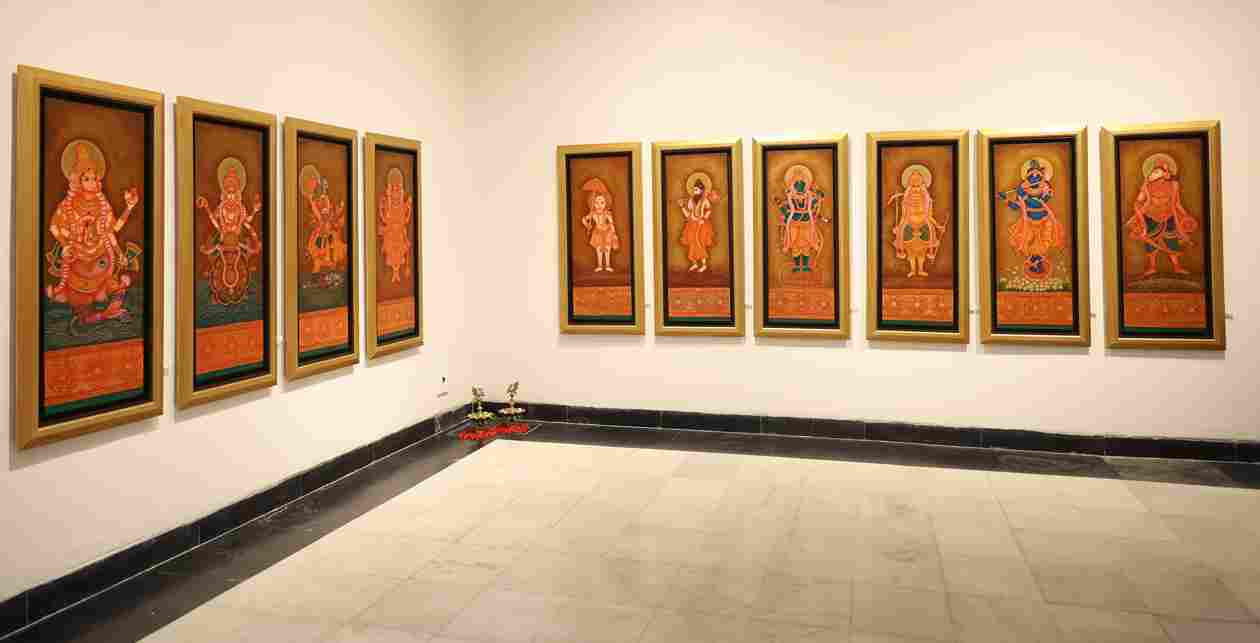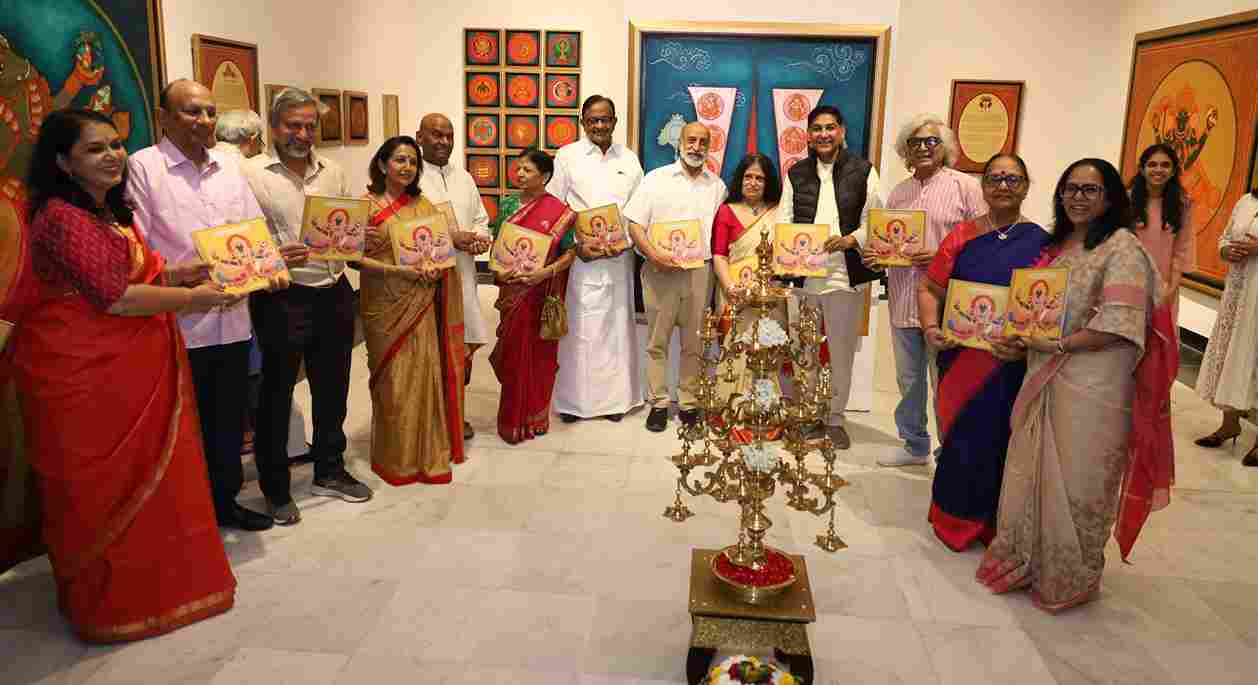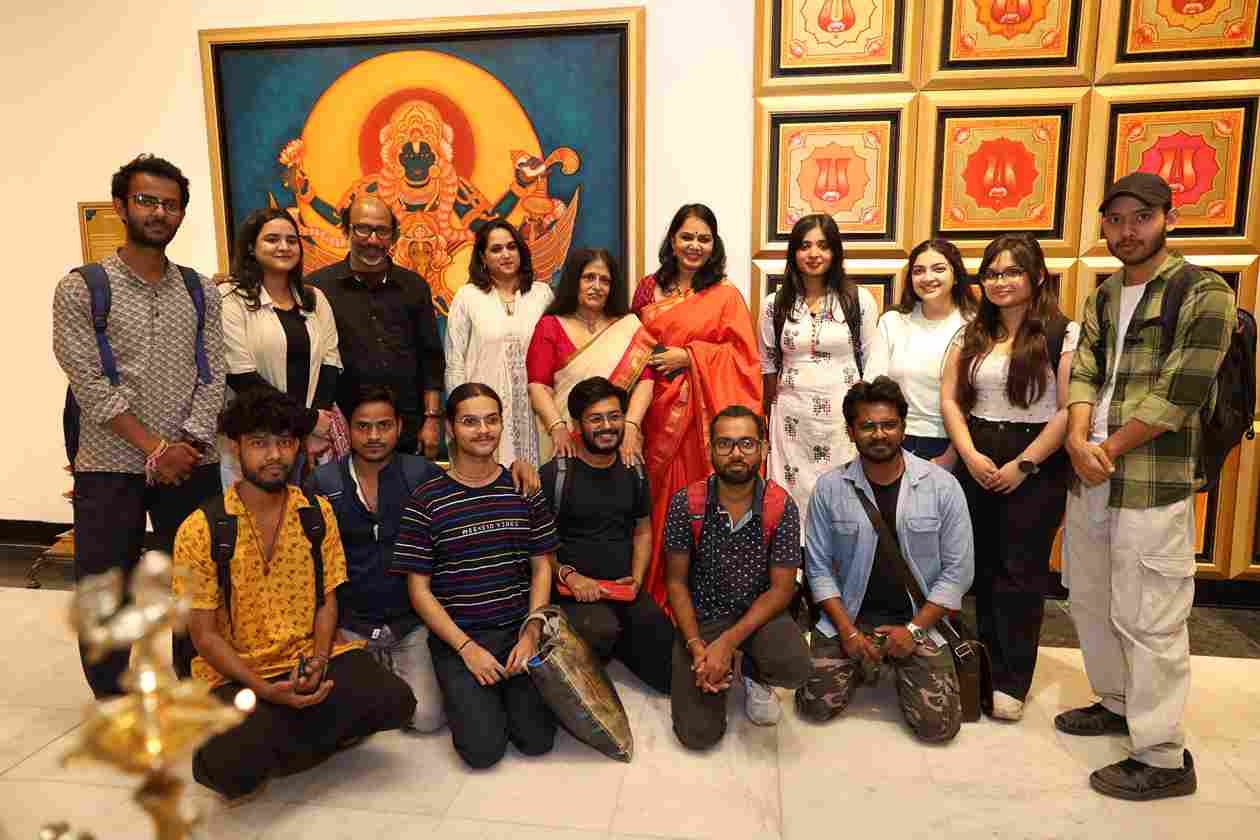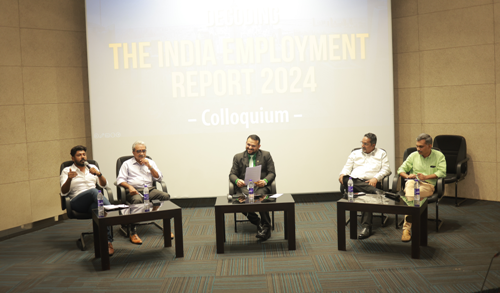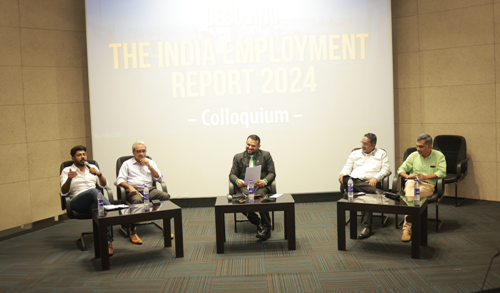Scholars and artists hail contemporaneity of Arpitha Reddy’s murals at Delhi show
New Delhi / October 19, 2023
New Delhi, Oct 19: Fifty select works by Hyderabad-based Arpitha Reddy are on display in the national capital, bringing glimpses at a unique synthesis of traditional murals of the country’s south with present-day urban sensibilities.
The week-long Vishwatma at Bikaner House in Lutyens’ Delhi carries three major segments themed on Hindu mythology even as the paintings on a whole mirror the eclecticism of their maker who has been involved in a range of age-old arts across peninsular India. The October 19-25 show, curated by scholar-critic Uma Nair, was inaugurated by classical dancer Raja Reddy.
The Kuchipudi exponent, while announcing Vishwatma open on Wednesday evening, lauded the artist’s full-time engagements with the world of visuals. “Dedication is the meaning of ‘Arpita’, and she has lived up the spirit of the name,” the octogenarian performer noted in the presence of his life-partners Radha and Kaushalya, both equally illustrious dancers.
“Arpitha is an MA in Political Science, and yet could return full-fledged to her fundamental passion, which is visual art,” Padma Bhushan Reddy said at the show, which blends the painter’s two decades of brush with an array of forms such as Pata Chitra, Phad, Thangal, Cherial, Tanjore and Kalamkari besides the Kerala murals.
To former Finance Minister P. Chidambaram, who took a round of the show, the artworks have been “very impressive, particularly for their colour schemes”. In a note, he said: “The scale of the canvas and the choice of bright colours mark the art of Arpitha, the creator, very impressive.”
Art historian Aman Nath described Arpitha as a relay-revivalist among those into artistic engagements that will enable Bharat to sustain its distinction as the world’s most ancient civilisation alive. “Our continuity does not demand a Cubist hacking of known symbolism just to experiment into the future,” he noted. “We add streams of change so that the wise river flows.”
Arpitha, who went on to do a Masters in Drawing and Painting (from Hamidia College at Bhopal in 2009), said she has been conscious not to repeat the frequently-done topics. “Traditional muralists largely stick to a certain stock of themes. I have chosen to stay off the trodden path to find one of my own,” added the 53-year-old winner of several awards and honours, with exhibitions to her credit in major cities within the country and abroad.
Curator Uma Nair said Arpitha uses traditional iconography in ways that lends it contemporaneity. “Her designs are steeped in tantric elements along with the subcontinent’s miniatures. The frescos essay Puranas as if they take our antiquity forward,” added the author-historian, about Vishwatma, which has design support from artist Trupti Joshi.
Water-colour master Sudip Roy praised Arpitha for her “prudent use of shades that add to the intelligent compositions” even as Nupur Kundu, another abstract artist, said the exhibits at Viswhatma exemplify the intricacy of the subject and the meticulousness in the treatment.
To artist Jai Khanna, Vishwatma is a “wonderful take” on the swaroopas of Lord Vishnu, while sculptor Neeraj Gupta noted that Arpitha’s works were a “different presentation” on temple art, with influences of even the traditional Kasauli paintings of Himachal Pradesh.
Ramesh Kandagiri of College of Art, Delhi, found the show highlighting Arpitha’s deep knowledge about mythology. Added artist Ompal Sansanwal: “The technique is what really makes these old themes topical.” Ace lensman Manoj Arora, hailing especially the ‘Gajendra Moksham’, noted that the intertwining of Vishnu and Ganesha as figures in an art show is “unique”.
Present at the ceremony included Bikaner House Resident Commissioner Dhiraj Srivastava, who gifted the Vishwatma catalogue to the distinguished guests. The 40-page book has been designed by Vadodara schoolboy Parth Joshi.
Vishwatma chiefly has three segments: a 16-work series titled Namam depicting the Vaishnava tilak in various colours and a 15-painting Sumangala as an assemblage of auspicious symbols, besides the Dashavataras that portray the 10 halloed manifestations of the lord. Also, there are singular studies, the most important being the Panchmukhi Ganesha, alongside some figurative images that extol the Kerala tradition of murals.
The show, from 11 a.m. to 7 p.m. and open on Sunday as well, will have curatorial talks by the curator, with the aim of particularly benefiting college students.
